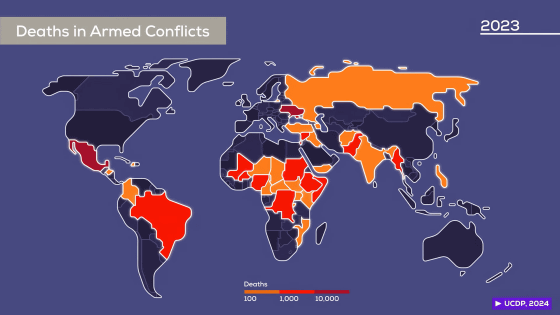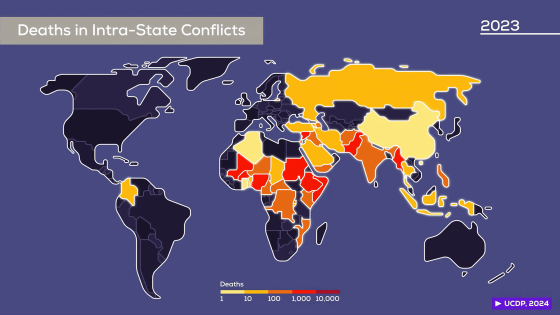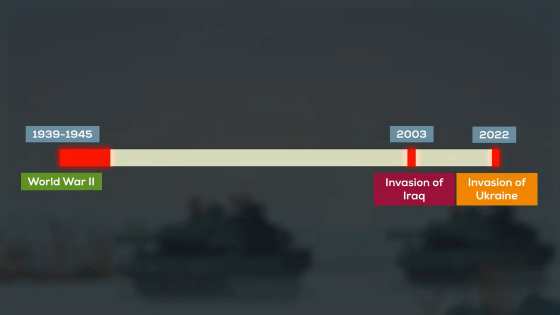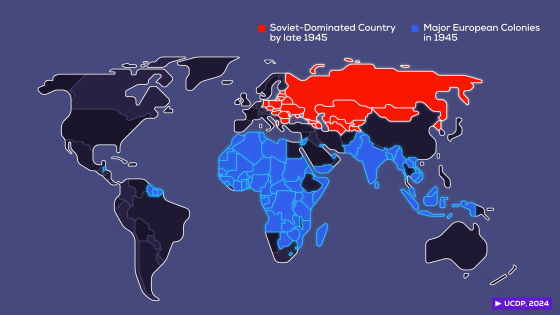Are there more wars in the world? Why do wars happen?

At the time of writing, armed conflicts are occurring all over the world, including the ongoing Russian invasion of Ukraine and Israel's attacks on the Gaza Strip. The educational YouTube channel
Syria, Israel, Ukraine - A New Decade of War - YouTube
The figure below shows the areas where armed conflict occurred in 2014, colored by the number of deaths, with orange indicating more than 100 deaths, red indicating more than 1,000 deaths, and brown indicating more than 10,000 deaths.

The areas where armed conflicts will occur as of 2023 look like this. In the 10 years since 2014, the Afghanistan conflict has calmed down, the Islamic State (IS) has weakened, and several armed conflicts have converged, such as

Below is a table summarizing the breakdown of armed conflicts. Red indicates civil wars and blue indicates conflicts between nations. We can see that civil wars make up the overwhelming majority of armed conflicts occurring around the world.

Below is a diagram showing the areas where civil war occurred as of 2014.

And the areas where civil wars will occur as of 2023 look like this.

Kurzgesagt cited the Ethiopian Civil War, between the Ethiopian government and rebel forces, as the deadliest of the decade's civil wars, which is estimated to have killed more than 500,000 people.

Many other casualties also occurred in the civil wars in Sudan, Yemen, and Myanmar.

Additionally, countries such as Mali, Nigeria, Burkina Faso, Somalia and Mozambique are under threat from Islamic extremism.

Below is a diagram showing areas where conflicts between nations are occurring as of 2023.

Israel continues to attack the Gaza Strip.

The most influential armed conflict is Russia's military invasion of Ukraine, which is considered the first large-scale interstate war in 20 years since the Iraq War and the first time a major power has invaded another country to gain territory since World War II.

Below is a graph showing the trend in the number of deaths worldwide due to armed conflict. In 2022, 310,000 people died.

Although the number of deaths over the past few decades seems to be very high in recent years, it is still low compared to the period of World War I and World War II. However, it is unclear whether the number of deaths will decrease or increase in the future.

Kurzgesagt points out that 'most armed conflicts occur in countries that were former Soviet republics or European colonies. In former Soviet republics and European colonies, armed conflicts are more likely to occur due to 'ethnic divisions by borders,' 'unequal distribution of resources,' and 'power vacuums.'

Parties to modern armed conflicts are often supported by external powers: Iran, for example, supports the Houthis, Hezbollah and Hamas.

Ukraine is also supported by Western countries such as the United States, Britain, Germany, Canada and France, while Russia is supported by China, Iran and North Korea.

Another notable fact is China's growing presence: by 2024, China's industrial production will be comparable to the combined scale of the United States and the EU.

China also accounts for 12% of the world's total military budget.

The information that 'China accounts for 12% of the world's military budget' is based on the figures officially announced by China, and it is estimated that China has a military budget of 464 billion dollars (about 70 trillion yen) including undisclosed budgets. This poses a threat to the United States, which has the world's largest military power.

Related Posts:
in Video, Posted by log1o_hf







